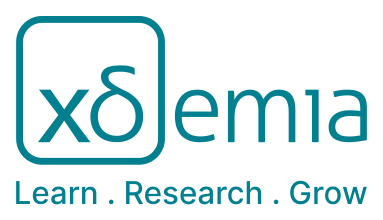Topology and Control of MV DC-DC Converters
10 Enrollments Level : AdvancedRelevance
DC-DC converters signify the key enabling technology of an efficient and controllable electrical power conversion of the future. With growing electrical power demand and distributed renewable generation, the power grid of the future faces complex challenges regarding control of power flow, grid stability, and grid expansion. Furthermore, the efficient use of materials such as copper become increasingly relevant while the electrical power demand increases.
Medium voltage DC-DC converters can be efficiently used for high-power applications to achieve a controllable power flow and directly power DC applications. With the use of medium frequency transformers, the power conversion process is not only energy efficient but also saves materials.
Abstract
This building block provides theoretical and practical insights into medium voltage DC-DC converter topologies and their modulation. Starting with an introduction to soft-switching, the building block explores different power converters and their operating principles are examined. The focus is on understanding the current and voltage waveforms of the power converters, enabling a deeper insight in the design aspects and evaluation of power converters. The presented theory provides the participant a basic starting point for power converters designs. The building block continues to present modular power converters in different configurations and the associated challenges in control.
The theory learned from the reader can then directly be applied for an accompanying exercise and simulation. Finally, the laboratory exercise allows for practical handling of DC-DC converters and hands-on investigation to complete the broad over-view of medium voltage DC-DC converters.
Learning Outcomes
Learn how DC-DC converters for medium voltage applications are operated and controlled
Identify the difference between hard and soft switching
Analyse the current waveforms of a converter to check for soft switching conditions
Use the background for the given converter to achieve own basic power converter designs
Design a control system for a DC-DC converter including current and voltage control
Identify the different modular configurations
Identify the challenges in control of the given modular configurations
Design a control loop for an ISOP connected power converter
Prior Knowledge
Fundamentals in power electronics (e.g. semiconductor switches and diodes, principles of efficient power conversion)
Fundamental knowledge about the operation of DC-DC converters (e.g. PWM modulation, steady-state analysis)
Principles of transformer operation and modelling (single-phase and three-phase)
Keywords
- DC-DC Converters
- Medium Voltage DC Grids
- Power Converter Control
- Modular Converters
Elements
1. About this Building Block
Building Block Descriptors
This element describes the components, learning outcomes, and contents of the building block.
2. Presentations
Presentation
Presentation is further material to understand the topics of the reader. The material is not completely the similar, some topics are highlighted more in detail in the slides and the video.
3. Video and knowledge clips
Video
Video lecture of the presentation. It gives the students more insights and more explanation.
4. Reader
Reader
Delivers the basic knowledge about the topic. Introduces the reader into the topics of DC-DC converter topologies and their control. The learned knowledge is deepened with the presentation and video.
5. Simulations
Simulation
The simulation builds on the exercise. There the students can investigate the operation of complex systems described in the reader. Furthermore, both knowledge gained of the reader and exercise part are used here. The simulation combines the most complex parts of the BB and should be done at after the reader and exercise. Since the simulation can be done interactively, students can investigate what happens to the converter operation and control when changing parameters.
6. Exercises
Exercise
The topologies introduced in the reader are investigated in the exercise. The student can use the formulars derived in the reader and investigate their handling. Also, the student will use the formulars to calculate values he or she will later use in the simulation.
7. Assignment
Laboratory
Provides practical handling of the DAB3 converter and allows for in-person investigation of the control and current and voltage waveforms. Background of the reader is required.
8. Self-assessments
Self Assessment
Allows the participant to test if the most important learning points of the material are understood correctly.
9. Self-assessments
Self Assessment Answer Key
Answer key for the self assessment.
